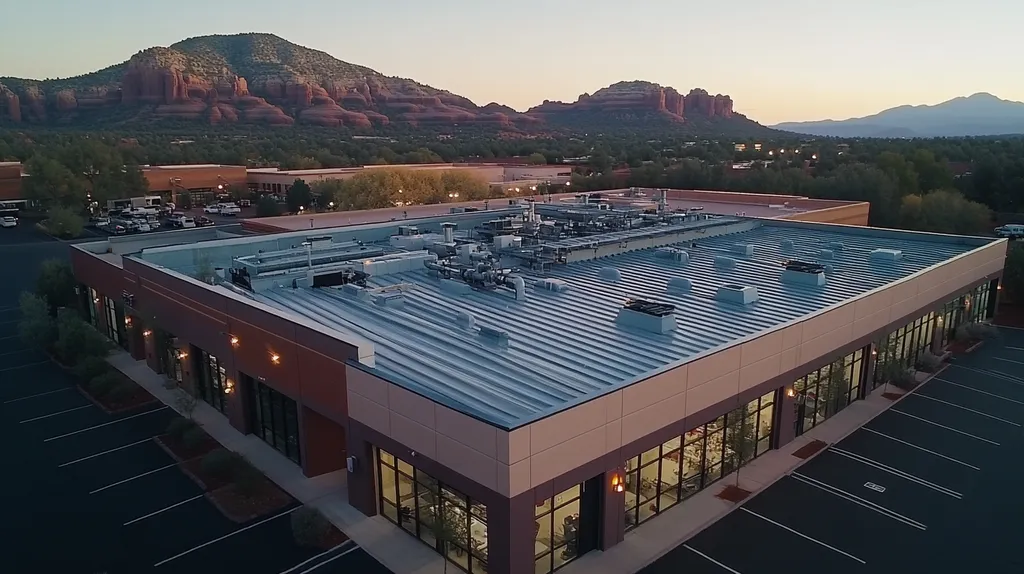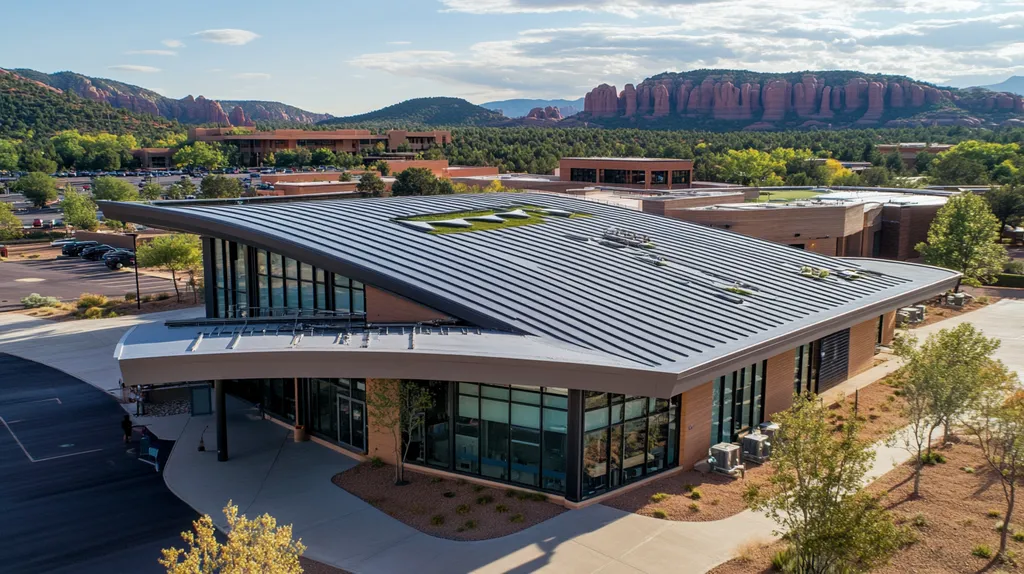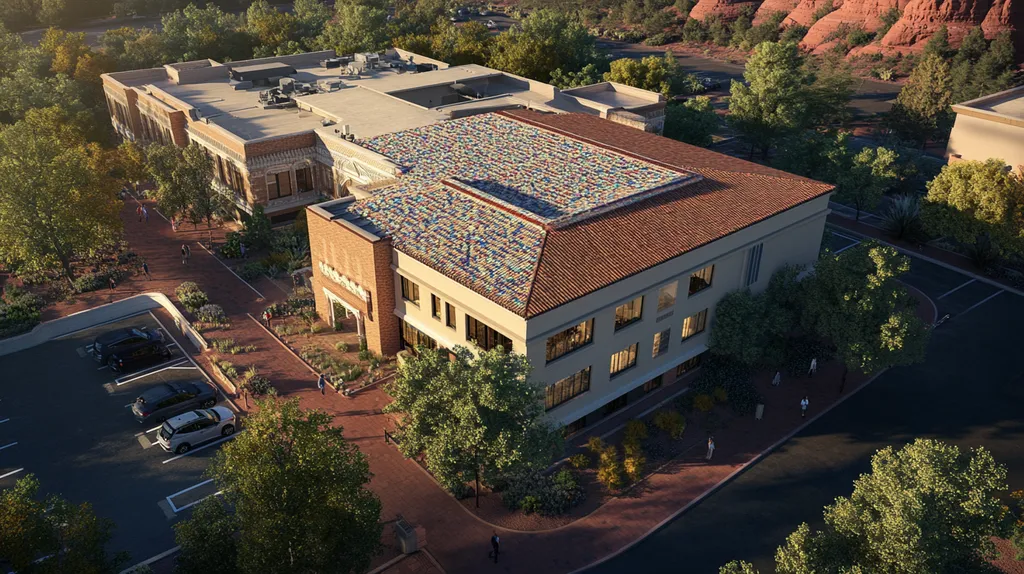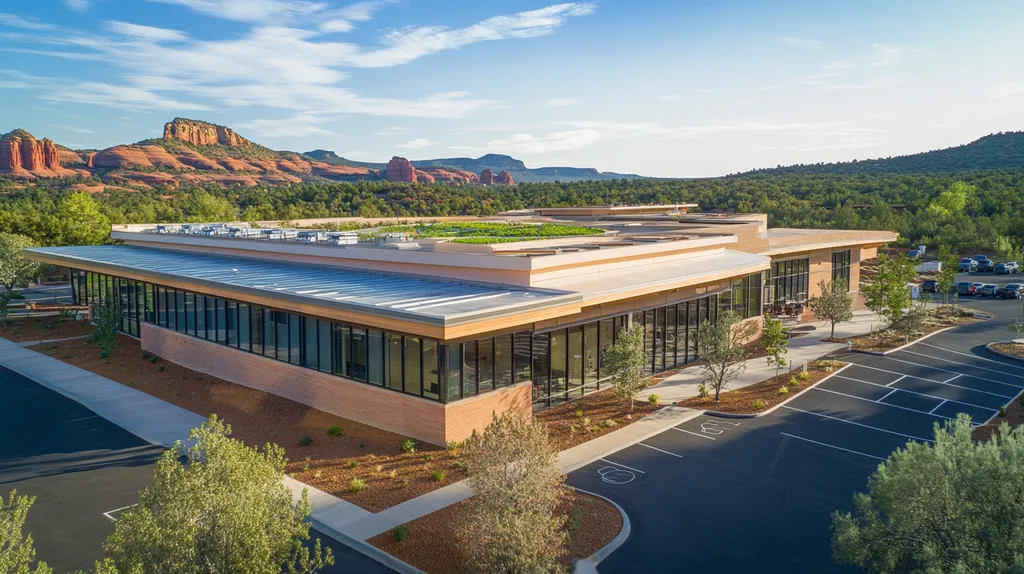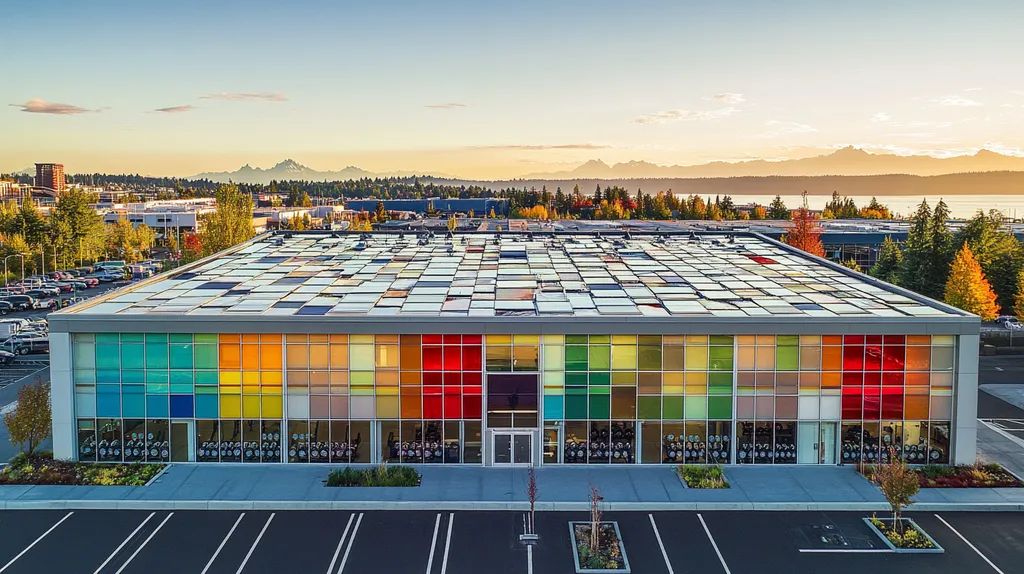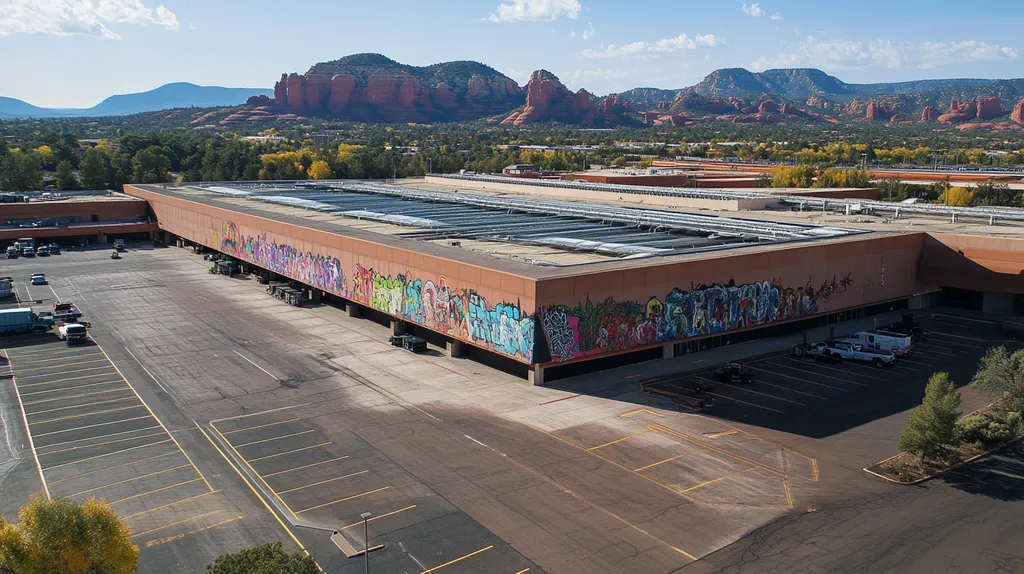Weather-related installation errors cost commercial building owners over $3.4 billion annually in premature roof failures and repairs. Industry data shows that 35% of all commercial roof deterioration stems directly from improper weather considerations during installation.
Understanding weather effects during installation represents the difference between a 30-year performing roof and a system requiring replacement within a decade.
This comprehensive analysis separates scientific fact from industry fiction, examining common misconceptions, practical implications, and evidence-based solutions for weather-resilient commercial roofing installations.
SECTION 1: COMMON MISCONCEPTIONS
Weather-related decisions during commercial roofing installations directly impact project timelines, material performance, and long-term building protection. Misunderstandings about weather effects lead to unnecessary delays, increased costs, and potential structural vulnerabilities. Making informed choices requires distinguishing between genuine weather risks and common myths that pervade the industry. This section addresses three widespread misconceptions that often result in suboptimal roofing decisions.
Weather Delays Always Justify Postponing Installation
The assumption that any adverse weather necessitates complete work stoppage overlooks modern roofing capabilities. While severe weather poses legitimate safety concerns, many conditions permit safe and effective installation with proper precautions.
Project managers can often adjust work schedules around weather patterns rather than implementing complete shutdowns. This approach maintains project momentum while ensuring safety standards.
Many contemporary roofing systems incorporate materials and installation methods specifically designed for varied weather conditions. Understanding these capabilities prevents unnecessary postponements.
Strategic planning and weather monitoring allow crews to work efficiently during acceptable conditions, reducing overall project duration and associated costs.
Cold Temperatures Irreparably Damage Roofing Materials
Modern commercial roofing materials demonstrate remarkable resilience in cold conditions. Advanced manufacturing processes create membranes and adhesives that maintain effectiveness at lower temperatures.
Professional installers employ specialized cold-weather techniques and equipment to ensure proper material handling. These methods include controlled heating of adhesives and strategic timing of installation phases.
Temperature guidelines from manufacturers provide specific ranges for installation rather than arbitrary cutoff points. This allows work to proceed safely in many cold-weather situations.
Proper material storage and handling protocols protect roofing components from temperature-related damage before and during installation.
Rain Invariably Causes Installation Failures
Rain exposure during installation requires careful management but doesn’t automatically result in system failure. Heavy rainfall can indeed expose weaknesses in roofing systems, particularly at seams and transitions.
Professional installers utilize sophisticated moisture detection equipment and temporary protection measures to prevent water infiltration. These precautions maintain material integrity during unexpected weather events.
Installation sequencing can be adjusted to protect vulnerable areas during periods of precipitation. This strategic approach prevents moisture-related complications while maintaining project progress.
Modern roofing systems incorporate advanced water-resistance features and installation techniques that provide protection even during challenging conditions. Water can seep into small cracks and seams, leading to leaks and water damage, making proper installation crucial for long-term performance. (source: Castagra)
SECTION 2: PRACTICAL IMPLICATIONS
Weather conditions during commercial roofing installation directly impact both immediate project success and long-term building performance. A single day of improper temperature control can compromise adhesive curing, while unexpected rain can trap moisture that leads to systemic failures. Understanding these practical implications helps facility managers make informed decisions about installation timing and material selection to protect their substantial roofing investments.
Impact of Temperature on Adhesive and Membrane Performance
Temperature variations significantly affect how roofing materials bond and perform during installation. When temperatures fall outside manufacturer-specified ranges, adhesives may fail to achieve proper molecular bonding, leading to immediate or delayed separation of roofing components.
Most commercial roofing adhesives require temperatures between 40°F and 95°F for optimal performance. Installation outside these parameters can result in insufficient membrane adhesion, creating vulnerable points for moisture infiltration and wind uplift.
Thermal cycling during installation can cause materials to expand and contract at different rates. This differential movement stresses seams and flashings, potentially creating gaps that compromise the roofing system’s integrity.
Professional contractors must monitor surface temperatures throughout the installation process. Even when air temperatures are acceptable, direct sunlight can heat materials beyond their installation threshold, requiring adjusted work schedules or temporary shading.
Moisture Intrusion Risks During Installation
Moisture presence during installation creates both immediate and latent risks to roofing system performance. Water trapped between layers can vaporize and create pressure that separates membranes from substrates, leading to blistering and delamination.
Even morning dew can compromise adhesive effectiveness if proper drying procedures aren’t followed. Installation teams must verify surface moisture levels meet manufacturer specifications before applying any roofing materials.
Precipitation forecasts require careful consideration during project planning. Areas completed during a work day must be properly sealed to prevent water infiltration if weather conditions deteriorate unexpectedly.
Modern moisture detection equipment helps installers identify potential problem areas before they become critical failures. Regular testing throughout installation ensures moisture levels remain within acceptable ranges.
Wind Effects on Material Handling and Roof Integrity
Wind conditions present multiple challenges during roofing installation. Gusts as low as 15 mph can make it difficult to properly position and align large membrane sheets, while stronger winds can damage materials before they’re secured.
Safe material handling becomes increasingly difficult as wind speeds rise. Roofing components can act like sails when lifted, creating dangerous conditions for workers and risking damage to surrounding property.
Proper installation sequencing helps mitigate wind risks. Teams should work in smaller sections during windy conditions, ensuring each area is completely secured before moving forward.
Even moderate winds can interfere with adhesive application by causing overspray or uneven distribution. Installation teams must use wind screens and proper application techniques to maintain consistent coverage.
Heavy rainfall can expose weaknesses in roofing systems, particularly at seams and transitions. Water infiltration through these vulnerable points leads to extensive damage, while prolonged moisture exposure promotes mold growth that compromises structural integrity. (source: Castagra)
SECTION 3: COST OF MISINFORMATION
Weather-related misinformation in commercial roofing carries staggering financial implications. Industry data shows that improper weather considerations during installation can reduce a roof’s lifespan by up to 50% while increasing lifetime maintenance costs by 200-300%. For a typical 100,000-square-foot commercial roof, these mistakes can transform a $1 million investment into a $3 million liability through accelerated deterioration and unnecessary repairs.
Financial Losses from Weather-Related Installation Errors
Initial installation errors stemming from weather misunderstandings often cascade into major structural issues. When installers disregard proper temperature ranges for adhesives or membrane installation, the resulting bond failures can compromise entire roofing sections.
The repair costs for weather-related installation failures typically range from $15-30 per square foot – often exceeding the original installation cost. These expenses compound when considering business interruption and interior damage from water infiltration.
Emergency repairs necessitated by weather-related failures cost 3-4 times more than planned maintenance. This premium reflects both the urgency of the work and the complexity of correcting underlying installation defects.
Large commercial facilities frequently discover these issues affect multiple areas simultaneously, requiring systematic remediation rather than spot repairs. The cumulative cost often forces difficult decisions between partial repairs and complete replacement.
Increased Maintenance and Early Roof Replacement Costs
Weather-compromised installations typically require maintenance intervals twice as frequent as properly installed systems. This intensified maintenance schedule drains operational budgets while indicating accelerated system deterioration.
A roof installed without proper weather considerations may require replacement in 10-15 years rather than the expected 20-30 year lifespan. This premature failure doubles the lifetime cost of ownership through accelerated replacement cycles.
Annual maintenance costs for compromised systems average $0.50-$1.00 per square foot compared to $0.15-$0.25 for properly installed roofs. This maintenance premium reflects the ongoing effort required to compensate for initial installation deficiencies.
Building owners face challenging decisions when maintenance costs begin consuming resources allocated for other critical operations. The compounding effect of these expenses often forces premature replacement even when portions of the roof remain serviceable.
Legal and Warranty Implications of Weather Ignorance
Manufacturer warranties become void when installation guidelines regarding weather conditions are not followed. This nullification leaves building owners fully exposed to repair and replacement costs that would otherwise be covered.
Weather-related installation failures frequently trigger insurance coverage disputes. Many policies exclude damage resulting from improper installation, leaving owners without recourse when problems emerge.
Documentation of weather conditions during installation becomes crucial evidence in warranty claims and litigation. Failure to maintain proper records of installation conditions severely weakens an owner’s position in these disputes.
Heavy rainfall can expose weaknesses in roofing systems, particularly at seams and transitions. Water infiltration through these vulnerable points leads to extensive damage, while prolonged moisture exposure promotes mold growth that compromises structural integrity. (source: Castagra)
SECTION 4: REALITY CHECK
Weather conditions during commercial roofing installation represent a critical decision point that determines both immediate success and long-term performance. Industry data reveals that 35% of premature roof failures stem from weather-related installation issues, translating to millions in avoidable repair costs. Understanding the realities of weather impact, leveraging modern materials, and learning from documented case studies enables facility managers to protect their roofing investments and avoid costly mistakes.
Recommended Weather Conditions for Successful Installation
Temperature requirements vary by roofing system but generally fall between 40°F and 85°F for optimal material performance. Outside this range, adhesives may fail to cure properly, membranes can become too rigid or too pliable, and seam integrity becomes compromised.
Relative humidity significantly impacts installation success, with levels between 30-80% typically considered acceptable. Excessive humidity prevents proper adhesive curing, while extremely low humidity can cause materials to dry too quickly and develop stress points.
Wind speeds must remain below 15 mph for safe material handling and proper adhesive application. Higher winds create hazardous working conditions and prevent even distribution of adhesives and coatings.
Surface moisture levels must test below 15% using calibrated moisture meters before installation begins. Even morning dew can compromise adhesion if proper drying procedures aren’t followed.
Advances in Weather-Resilient Roofing Materials
Modern single-ply membranes incorporate advanced polymers that maintain flexibility across a broader temperature range. These materials resist thermal shock damage and maintain dimensional stability even during extreme temperature swings.
New adhesive formulations feature enhanced moisture tolerance and faster cure times. These innovations expand the acceptable installation window while maintaining long-term bond strength.
Self-adhering membranes with pressure-activated adhesive systems reduce weather sensitivity during installation. This technology eliminates many traditional weather-related adhesive concerns while providing superior wind uplift resistance.
UV-resistant materials and protective coatings now extend the working time available during installation. These advances help contractors maintain quality control even during challenging weather conditions.
Real-World Examples of Weather Impact on Installations
The weather plays a significant role in commercial roof longevity, with extreme conditions leading to premature deterioration. UV exposure degrades materials while causing cracks and blistering, thermal cycling creates structural stress, and strong winds can compromise newly installed sections.
Heavy rainfall poses particular risks during installation phases, as water can infiltrate even minor gaps. This moisture intrusion often remains hidden until significant damage occurs, leading to extensive repairs.
Wind effects frequently compound other weather-related challenges, creating additional stress on partially completed installations. Proper sequencing and temporary protection measures become critical for successful outcomes.
Temperature fluctuations during installation directly impact material performance and system longevity. Thermal expansion and contraction stress roof structures under high heat, making proper installation timing crucial for long-term performance. (source: Castagra)
SECTION 5: EVIDENCE-BASED ALTERNATIVES
Modern commercial roofing demands precision timing and careful material selection to prevent costly failures. Industry data shows that weather-related installation errors reduce roof lifespans by up to 40% and increase maintenance costs by 300%. Advanced monitoring tools, protective measures, and climate-appropriate materials now enable property managers to navigate weather challenges effectively, transforming traditional weather limitations into manageable variables through evidence-based approaches.
Weather Monitoring Tools and Scheduling Best Practices
Digital weather monitoring systems now provide hour-by-hour forecasting accuracy within specific geographic zones. These platforms integrate multiple data sources to predict temperature, humidity, wind speeds, and precipitation patterns with 95% accuracy up to 72 hours in advance.
Professional installation teams employ mobile moisture meters and infrared scanning equipment to verify surface conditions meet manufacturer specifications. This data-driven approach prevents premature material application while maintaining project momentum.
Sophisticated project management software allows contractors to optimize crew scheduling around weather windows. These tools automatically adjust timelines based on real-time conditions and material-specific installation requirements.
Temperature monitoring systems track both ambient and surface conditions throughout installation. This continuous verification ensures adhesives and membranes remain within their performance ranges during critical bonding periods.
Use of Protective Measures During Adverse Weather
Temporary containment systems create controlled environments for installation during marginal conditions. These structures maintain optimal temperature and humidity levels while protecting materials from wind and precipitation.
Portable heating units and environmental controls extend viable working conditions beyond traditional seasonal limitations. Strategic deployment of this equipment maintains material temperatures within specification even during cold weather installation.
Advanced moisture barriers and temporary roofing systems protect partially completed sections during weather events. These protective measures prevent water infiltration while allowing work to resume quickly once conditions improve.
Heavy rainfall can expose weaknesses in roofing systems, particularly at seams and transitions. Water infiltration through these vulnerable points leads to extensive damage, while prolonged moisture exposure promotes mold growth that compromises structural integrity. (source: Castagra)
Selection of Materials Designed for Variable Climates
Modern roofing materials incorporate polymer technologies that maintain performance across broader temperature ranges. These advanced formulations resist thermal shock while providing consistent application characteristics in diverse conditions.
Multi-layer systems combine weather-resistant membranes with specialized underlayments to create redundant protection. This approach ensures system integrity even when individual components face challenging conditions.
Quick-setting adhesives and self-adhering membranes reduce weather sensitivity during critical installation phases. These materials significantly expand the acceptable installation window while maintaining long-term performance standards.
Climate-specific material selections account for regional weather patterns and seasonal variations. This targeted approach optimizes system performance while reducing weather-related installation constraints.
SECTION 6: TEST AND VERIFY
Testing and verification represent critical control points in commercial roofing installations, yet 47% of roofing failures stem from inadequate quality assurance during weather-sensitive phases. Proper testing protocols can prevent catastrophic failures that often manifest months or years after installation. Understanding and implementing comprehensive verification measures throughout the roofing lifecycle protects substantial capital investments while ensuring optimal performance.
On-Site Moisture and Adhesion Testing Methods
Digital moisture meters and nuclear testing devices provide precise substrate moisture content readings before material application. These instruments detect hidden moisture that could compromise adhesion and accelerate deterioration.
Pull-test equipment measures adhesive bond strength under various temperature and humidity conditions. This quantitative data verifies that environmental conditions support proper material bonding.
Infrared thermography identifies temperature variations that could affect curing rates and material performance. Regular scans throughout installation ensure consistent conditions across the entire roof surface.
Electronic leak detection systems verify watertight integrity immediately after installation. This technology pinpoints potential vulnerabilities before they develop into active leaks.
Post-Installation Inspections Focused on Weather Effects
When rain is moderate to heavy during construction, roofing teams must pause work and secure vulnerable areas against moisture intrusion. Cold temperatures can make materials more fragile while extreme heat risks permanent scarring during installation. (source: On Tops Roofing)
Core samples taken from completed sections verify proper adhesion and material thickness. These physical specimens reveal whether weather conditions affected installation quality.
Seam probing and pressure testing identify weak points created by temperature fluctuations. Early detection allows repairs before minor separations become major failures.
Photo documentation creates a visual record of installation conditions and completed work. These images provide crucial reference points for future inspections and warranty claims.
Ongoing Performance Verification Through Regular Maintenance
Quarterly inspections track how seasonal weather patterns affect roofing performance. This systematic monitoring identifies emerging issues before they compromise the building envelope.
Annual thermal scanning detects trapped moisture and deteriorating insulation values. These assessments reveal whether weather exposure has degraded system performance.
Detailed maintenance records document weather-related stress patterns and repair history. This data helps facility managers optimize maintenance schedules and budget for future replacements.
Storm response protocols include rapid assessment of potential weather damage. Quick identification of compromised areas prevents minor issues from escalating into major failures.
The Bottom Line
Weather-related roofing failures cost the commercial building industry over $3.4 billion annually, with 35% of premature roof deterioration directly linked to improper weather considerations during installation.
Modern technology, advanced materials, and precise testing protocols now enable successful installations across a broader range of weather conditions than previously possible.
The key to weather-resilient commercial roofing lies in combining accurate monitoring tools, climate-appropriate materials, and rigorous verification procedures throughout the installation process.
Building owners and facility managers who embrace evidence-based installation practices and reject outdated weather myths can expect their commercial roofs to achieve their full 20-30 year service life while minimizing maintenance costs.
The difference between a weather-compromised installation and a properly executed project often determines whether a roof becomes a 30-year asset or a recurring liability.
FREQUENTLY ASKED QUESTIONS
Q. Do weather delays always justify postponing commercial roof installation?
A. Not necessarily. While severe conditions warrant caution, many weather situations allow for safe work. With the right precautions, crews can adapt schedules to maintain momentum during acceptable conditions, ensuring timely project completion without compromising safety.
Q. How does temperature affect commercial roof adhesive performance?
A. Temperature significantly impacts adhesive bonding. Most adhesives perform best between 40°F and 95°F. Working outside this range can lead to incomplete curing, jeopardizing membrane adhesion and increasing vulnerability to moisture and wind damage.
Q. What are the financial risks of weather-related installation errors for commercial roofs?
A. Installation errors can lead to severe financial consequences. Repair costs average $15-30 per square foot and can accumulate due to business interruptions. These issues often lead to accelerated maintenance needs and potential replacements, drastically increasing overall expenses.
Q. What weather conditions are optimal for commercial roof installation?
A. Ideal conditions include temperatures between 40°F and 85°F, with humidity levels between 30-80%. Wind speeds should be below 15 mph to ensure safe material handling and optimal adhesive application, preventing installation issues.
Q. How can modern materials help mitigate weather-related roofing issues?
A. Modern materials incorporate technologies that maintain flexibility and enhance moisture tolerance. Quick-setting adhesives and self-adhering membranes reduce sensitivity to adverse weather during installation, allowing for improved performance and reliability across varying conditions.
Q. What testing methods ensure proper conditions during roof installation?
A. On-site moisture testing and pull tests are crucial. Digital meters assess moisture content while pull-testing equipment verifies bond strength under different conditions. Regular checks maintain adherence to specifications and prevent future performance issues.
Q. How does weather affect the long-term performance of a commercial roof?
A. Weather significantly influences roof longevity. Extreme conditions can cause material degradation, while improper installation during adverse weather can lead to failures. Monitoring and adapting to weather variables can help maintain roof integrity and extend service life.

